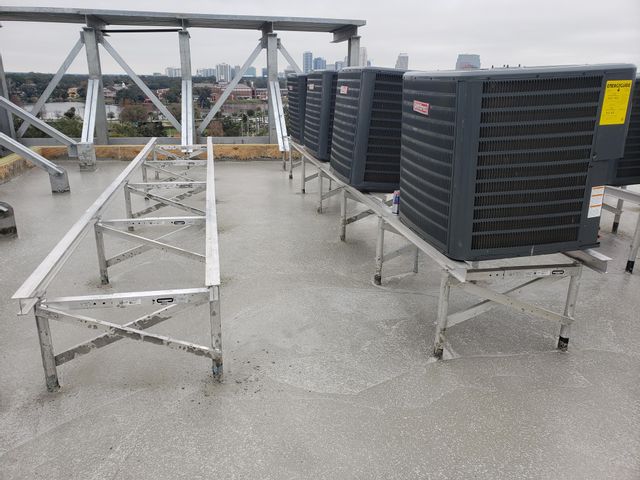Why We Love Lightweight Insulating Concrete

Manufacturing lightweight cellular concrete at the jobsite occurs when mixing Portland cement, a water slurry, and one of the many preformed foams produced by various brand-named manufacturers. The result is a stable, and yet flowable, lightweight insulating concrete which can usually be pumped over 500 ft. vertically and over 1,000 ft. horizontally. This allows set up and mobilization flexibility that mitigates logistical challenges and reduces friction on the jobsite.
Lightweight Insulating Concrete can be applied over vented or non-vented substrates like galvanized steel decking, existing roof membranes, precast, or cast-in-place structural concrete. In flat and/or low slope roof situations with numerous scupper or drain placements, you must have positive slope for proper drainage. Pro-Crete Systems can customize your slope to drain patterns with Expanded Polystyrene Insulation board (EPS) topped with lightweight insulating concrete, giving you a huge advantage. Increased R-values, dead weight reduction, full adhesion, numerous UL hourly assembly fire rating configuration possibilities, superior wind uplift resistance (Miami-Dade compliant), and FM approvals are but a few.
These advantages can be realized with both new and reroofing applications. We call EPS board, “holey” board because of the six strategic holes that are created in each 4 X 2 piece during production. This allows the lightweight insulating concrete to pour over and through each board to fully adhere each piece to the substrate below, and to lock the whole system into a monolithic roof structure. Once poured, the lightweight insulating concrete can be covered with the roofing membrane within 2-3 days.
The lightweight insulating concrete roof system also acts as a heat sink. This means that it is slow to release heat. This thermal inertia reduces extreme heat fluctuations and the resulting thermal stress that can cause roof membrane fatigue. R-values do not reduce over time and lightweight insulating concrete is more sustainable than rigid board roof systems. When traditional rigid board systems get wet, they must be torn out and discarded in landfill. In most cases, if a lightweight insulating concrete roof deck gets wet, it will dry out and only the membrane needs replacement. Let Pro-Crete Systems bid on your next commercial roofing job with budget, hard bid, or Value Engineered alternates.
About the Business
Have a question? Ask the experts!
Send your question

